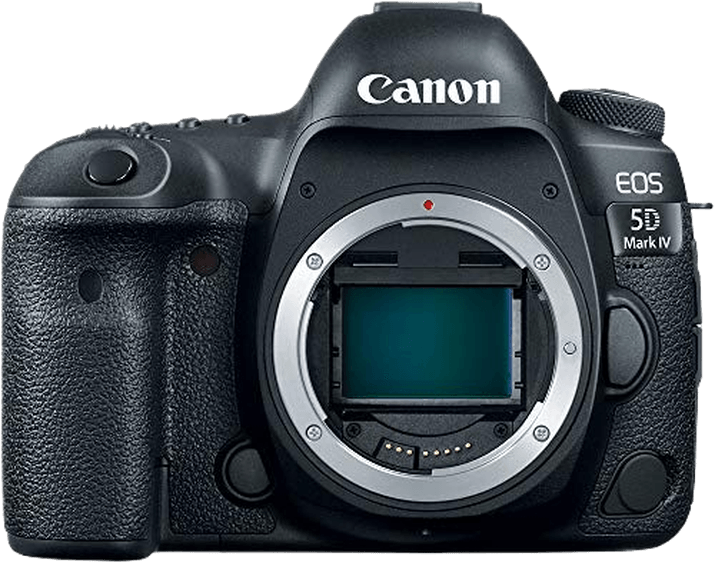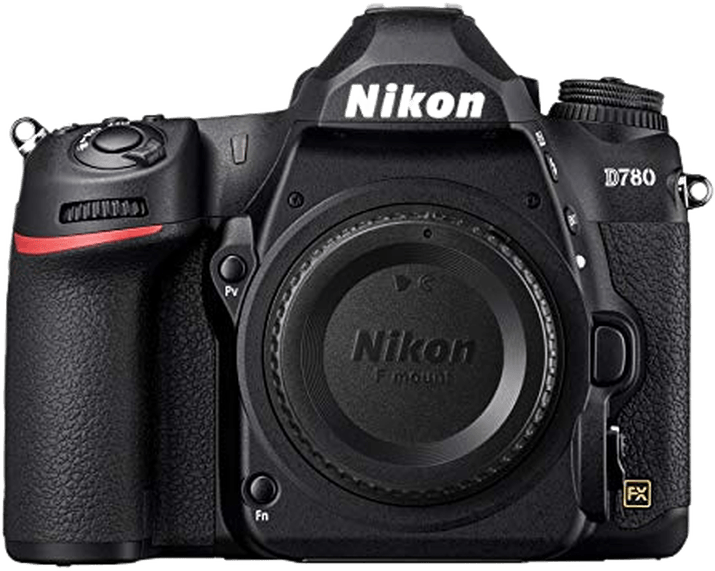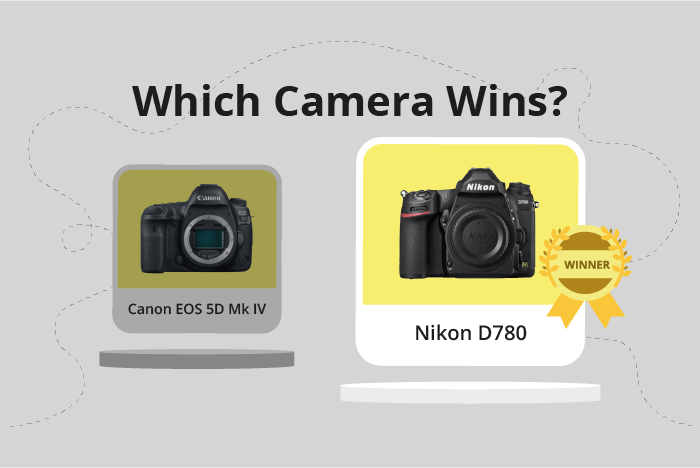Canon EOS 5D Mark IV vs Nikon D780 Comparison
Canon EOS 5D Mark IV

Nikon D780

The Nikon D780 outperforms the Canon EOS 5D Mark IV with a score of 81/100 compared to 75/100. Both DSLR cameras share similarities in size and weight, with the Canon measuring 151 x 116 x 76mm and weighing 890g, while the Nikon is slightly smaller at 144 x 116 x 76mm and lighter at 850g.
The Nikon D780 excels with its lower launch price of $2299 compared to the Canon’s $3500, making it a more cost-effective option. Additionally, the Nikon D780 is a newer model, released in 2020, while the Canon EOS 5D Mark IV was launched in 2016.
However, the Canon EOS 5D Mark IV still offers excellent performance and has a loyal user base. While it may not be the winner in this comparison, it remains a solid choice for many photographers.
Taking these factors into account, the Nikon D780 proves to be a better value option with its lower price and newer technology, while the Canon EOS 5D Mark IV holds its ground as a reliable and well-loved camera.
Canon EOS 5D Mark IV vs Nikon D780 Overview and Optics
The Nikon D780 wins in optics with a score of 77/100, while the Canon EOS 5D Mark IV scores 76/100. Both cameras share several specifications, such as a CMOS sensor, full-frame sensor size, and the lack of image stabilization. They also have proprietary lens mounts, with the Canon using the EF mount and the Nikon using the F mount.
The Nikon D780 outperforms the Canon EOS 5D Mark IV in a few areas. It has a faster shooting speed, offering 12 frames per second compared to the Canon’s 7. Additionally, the D780 has a higher DXOMARK score for the sensor at 97, as opposed to the 5D Mark IV’s score of 91. This higher sensor performance results in better image quality.
On the other hand, the Canon EOS 5D Mark IV has a higher megapixel count at 30.4, compared to the Nikon D780’s 25 megapixels. This allows the Canon to capture more details in images. The 5D Mark IV also uses the Digic 6+ processor, which provides fast and efficient processing of images.
Despite the Canon’s higher megapixel count, the Nikon D780 slightly edges it out in overall optics performance due to its faster shooting speed and superior sensor performance. Both cameras are excellent choices for photographers, but the Nikon D780 takes the lead in this comparison.
Canon EOS 5D Mark IV vs Nikon D780 Video Performance
The Canon EOS 5D Mark IV and the Nikon D780 share the same video score of 91/100, indicating a close competition between the two cameras in terms of video capabilities. Both cameras offer 4K video resolution and support a maximum video frame rate of 120fps. Additionally, they both have built-in time-lapse functionality.
However, the Canon EOS 5D Mark IV has an edge over the Nikon D780 in terms of maximum video dimensions, offering 4096 x 2160 pixels compared to the Nikon’s 3840 x 2160 pixels. This difference results in slightly higher video quality for the Canon EOS 5D Mark IV, making it the winner in this aspect.
On the other hand, the Nikon D780 does not have any specific advantages over the Canon EOS 5D Mark IV in the video department. Both cameras have identical video scores and share many of the same features, with the only notable difference being the maximum video dimensions.
In comparing the video capabilities of the Canon EOS 5D Mark IV and the Nikon D780, it is clear that the Canon EOS 5D Mark IV has a slight advantage due to its higher maximum video dimensions. This results in better video quality for the Canon camera. However, the Nikon D780 still offers excellent video performance, matching the Canon in most other aspects. Ultimately, both cameras are strong options for those seeking high-quality video capabilities, with the Canon EOS 5D Mark IV holding a minor advantage in video dimensions.
Canon EOS 5D Mark IV vs Nikon D780 Features and Benefits
The Nikon D780 outperforms the Canon EOS 5D Mark IV in features, scoring 87/100 compared to the Canon’s 74/100. Both cameras share some common specifications, such as a 3.2-inch screen size and touchscreen capabilities. Furthermore, both cameras offer Wi-Fi connectivity, making it easy to transfer images and control the camera remotely.
The Nikon D780 surpasses the Canon EOS 5D Mark IV in several aspects. Its screen resolution is higher, with 2,359,000 dots, compared to the Canon’s 1,620,000 dots, providing a sharper and more detailed display. Additionally, the D780 has a flip screen, giving more flexibility in shooting angles and composition. The presence of Bluetooth in the D780 also makes it more convenient to connect and share images with other devices.
On the other hand, the Canon EOS 5D Mark IV has a GPS feature, which the Nikon D780 lacks. This allows for geotagging of images and helps photographers track their shooting locations. However, this advantage may not be significant for all users, depending on their needs and preferences.
In terms of features, the Nikon D780 proves to be a better camera than the Canon EOS 5D Mark IV, thanks to its higher screen resolution, flip screen, and Bluetooth connectivity. The Canon EOS 5D Mark IV does offer GPS functionality, but this may not be a deciding factor for many photographers. Considering these points, the Nikon D780 emerges as the more feature-rich and versatile option of the two.
Canon EOS 5D Mark IV vs Nikon D780 Storage and Battery
The Nikon D780 outperforms the Canon EOS 5D Mark IV in storage and battery, scoring 97/100 compared to Canon’s 71/100. Both cameras share the same number of memory card slots, which is two. However, the Nikon D780 accepts SD/SDHC/SDXC (UHS-II compatible) memory cards, while the Canon EOS 5D Mark IV accepts SD/SDHC/SDXC (UHS-I compatible) and Compact Flash cards.
The Nikon D780’s battery life is significantly longer, lasting for 2260 shots compared to the Canon EOS 5D Mark IV’s 900 shots. Additionally, the Nikon D780 uses the EN-EL15b battery type and offers USB charging, making it more convenient for on-the-go users. In contrast, the Canon EOS 5D Mark IV uses the LP-E6N battery type and does not support USB charging.
Despite its lower score, the Canon EOS 5D Mark IV has the advantage of supporting Compact Flash cards, providing an additional storage option for users. However, the Nikon D780’s superior battery life and USB charging capabilities make it the better choice for those prioritizing storage and battery performance.
Canon EOS 5D Mark IV vs Nikon D780 – Our Verdict
Are you still undecided about which camera is right for you? Have a look at these popular comparisons that feature the Canon EOS 5D Mark IV or the Nikon D780:

